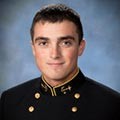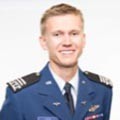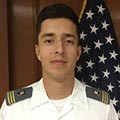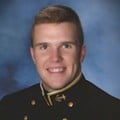2018 Winners
The winners were announced on March 1, 2018 at the National Building Museum in Washington, DC
Grand Laureates
Defense: U.S. Missile Defense Agency/Boeing Ground-based Midcourse Defense System
After decades of development, demonstrating that the Ground-based Midcourse Defense System could do what was once called impossible – intercept a target simulating an ICBM.
Space: SpaceX
For demonstrating potential operational reusability for orbital spaceflight for the first time since the space shuttle program.
Business Aviation: Pilatus PC-24 Versatile Jet
The PC-24, a pressurized, twin turbofan aircraft, is able to operate from unpaved landing strips as well as paved runways less than 3,000 feet long. The aircraft features integrated avionics, a flat-floor cabin, quick change seats and an oversize cargo door to provide operators with unsurpassed flexibility.
Commercial: Tom Gentile, President & CEO, Spirit AeroSystems
For leading the turnaround of the aerospace industry’s leading aersostructures provider and securing a long-term master contract with Boeing that is critical to the long-term viability of both companies, which will partner on additive manufacturing and other advanced processes
Defense
Best New Product: Logos Technologies Redkite
Taking a heavy sensor that could only be carried by a large aircraft and shrinking it to less than 35 lb. to fit in Class 3 tactical UAVs. Wide-area motion imagery allows moving vehicles and individuals to be tracked in city-size areas.
Dual Use: Raytheon Coyote UAV
For flying into and waiting in the eye of Hurricane Maria, allowing the National Oceanic and Atmospheric Administration to better forecast how intense the storm would be at landfall and more accurately estimate the magnitude of the storm surge.
Electronics/Avionics: U.S. Navy/Rockwell Collins Tactical Combat Training System Increment II.
This team developed the first airborne training instrumentation system with certified multi-level security that allows 5th-generation fighters to train with 4th-generation fighters while protecting sensitive data.
Operations: U.S. Missile Defense Agency/Boeing Ground-based Midcourse Defense System
After decades of development, demonstrating that the Ground-based Midcourse Defense System could do what was once called impossible – intercept a target simulating an ICBM.
Supplier Innovation: Metro Aerospace C-130 Microvanes
For commercializing Lockheed Martin-developed microvanes to reduce the aft-body drag on the C-130 and lower cruise fuel consumption by more than 3%. In 2017, Canada became the first -130 operator to install the devices.
Technology: Bell Helicopter V-280 Valor
A third-generation tiltrotor prototype for the U.S. Army’s Joint Multi Role Technology Demonstration, the development of the V-280 Valor, Bell Helicopter was selected for the program in 2014 and completed assembly of the flying demonstrator in September.
Unmanned Systems: Kratos UTAP-22
For the tenacious development of the UTAP-22 Mako, a militarized UAV derived from the U.S. Air Force’s BQM-167 aerial target drone. The highly maneuverable weapon and sensor-carrying unmanned aircraft has flown in large-scale military exercises and could soon be put into production for combat use.
Weapons: United States Special Operations Command/Dynetics GBU-69/B
Addressing an urgent warfighter need for a munition with increased lethality, reduced acoustic signature, and expanded range by fielding - the GBU-69/B Small Glide Munition (SGM) was developed, tested and fielded in less than three years for less than $25 million.
Space
Launchers: SpaceX
For demonstrating potential operational reusability for orbital spaceflight for the first time since the space shuttle program.
Leadership: Peggy A. Whitson (Ph.D.), U.S. Astronaut
In completing an extended 9.5-month stay aboard the International Space Station, Dr. Whitson set a new record for cumulative time in space (665 days) by a U.S. astronaut. She previously served as the first non-pilot and the first woman to head the Astronaut Office and was the first woman to command the ISS.
Operations: Indian Space Research Organization/Planet Labs
This organization launched a record 104 satellites in a single launch, including 88 Earth-imaging satellites for PlanetLabs to make daily global images of Earth widely available to help analyze changes over time.
Platforms: ViaSat/Boeing ViaSat-2
The entry into service of the world’s highest-capacity commercial communications satellite, ViaSat-2, reducing the cost of space-based connectivity enough to make it competitive with terrestrial services.
Science: Cassini Mission/Jet-Propulsion Laboratory
The inspiring symbiosis of science and engineering in repurposing instruments for studies unimagined during the spacecraft design, resulting in the discovery of what may be the best place in the solar system to look for present-day life beyond Earth.
Business Aviation
Best New Product: Foreflight
The expansion of its electronic flight bag’s planning, briefing, filing and weather information technology to incorporate Jeppesen’s worldwide library of terminal and VFR/IFR enroute charts presented on tablet devices.
Customer Service: MedAire
Offering the best anytime emergency response, evaluation, guidance and facilitation for individuals with medical or security issues anywhere globally, either terrestrially or while airborne, its centers in Phoenix (AZ), Frankfurt (Germany) and Beijing (China) have fielded more than 600 calls daily.
Electronics/Avionics: Dassault/Elbit FalconEye
For creating, certifying and installing FalconEye, the world’s first head-up display system that combines high-resolution synthetic vision with enhanced infrared vision and low-light video imaging, providing pilots clear visual guidance into remote airports, even during degraded visibility conditions.
Leadership: Edward M. Bolen, President & CEO, National Business Aviation Association (NBAA)
In this role, Mr. Bolen created a broad coalition to represent the business aviation community’s interests in a unified and forceful opposition to the transfer of federal control of the U.S. air traffic management system to a semi-private entity.
Platforms: Pilatus PC-24 Versatile Jet
The PC-24, a pressurized, twin turbofan aircraft, is able to operate from unpaved landing strips as well as paved runways less than 3,000 feet long. The aircraft features integrated avionics, a flat-floor cabin, quick change seats and an oversize cargo door to provide operators with unsurpassed flexibility.
Technology: Tamarack Aerospace Atlas Active Winglet System
For developing the first drag-reducing winglet system that incorporates active load alleviation, allowing winglets to be installed without having to reinforce the original wing structure. The Active Winglet is approved for retrofit to all Cessna CitationJet models, with more types to come.
Commercial
Best New Product: Metamaterial Technologies MetaAir Laser Strike Protection
A flexible optical filter applied to the inner surface of cockpit windows to block laser strikes without interfering with visibility. MTI partnered with Airbus to develop and commercialize this technology.
Leadership: Tom Gentile, President & CEO, Spirit AeroSystems
For leading the turnaround of the aerospace industry’s leading aersostructures provider and securing a long-term master contract with Boeing that is critical to the long-term viability of both companies, which will partner on additive manufacturing and other advanced processes
MRO: Delta TechOps
Delta TechOps avoided more than 1,000 potential engine events over the past year by implementing an innovative approach to asset monitoring and operations via data tools.
Platforms: 737 Max
Successfully introducing the first version of the 737MAX (737-8) into service, while simultaneously developing and flight testing the 737-9 and starting assembly of the 737-7. Amid production rate increases, Boeing’s Renton-based 737 team introduced the first MAX into the line without incurring delays or interruption.
Safety: Commercial Safety Aviation Safety Team/Aviation Safety Information Analysis and Sharing Initiative
An unparalleled collaboration between government and industry to improve aviation safety. Having exceeded its first 10-year goal and reduced U.S. commercial aviation fatality risk by 83%, CAST now aims to reduce the remaining risk (50%) by 2025, leveraging industry data and analytical tools from ASIAS.
Supplier Innovation: Norsk Titanium/Boeing
For qualifying the first additively manufactured structural titanium parts for a commercial aircraft. Titanium fittings produced using Norsk’s “wire-in-arc” Rapid Plasma Deposition process are FAA-approved and being installed in Boeing 787s.
Technology: Airbus
The BLADE project – which stands for “Breakthrough Laminar Aircraft Demonstrator in Europe” – which is tasked with proving the viability of introducing laminar flow technology to commercial aviation. It aims to improve aviation’s environmental footprint, bringing with it a 50% reduction of wing friction drag and up to 5% lower CO2 emissions.
Lifetime Achievement
Dr. John S. Langford, Chairman and CEO, Aurora Flight Sciences
Dr. Langford’s achievements range from leading the MIT Daedalus team that set human-powered flight records in 1988 to building Aurora Flight Sciences, the company he founded in 1989, into a world leader in autonomous flight. In 2017, Boeing moved to acquire Aurora for its expertise and Dr. Langford was named the next chairman of the American Institute of Aeronautics and Astronautics.
Bruce Whitman, Chairman, President and CEO, FlightSafety International
Mr. Whitman is being honored for providing clear direction, support and management for his aviation training and simulator manufacturing company for over 50 years and by doing so helping to ensure the safety of thousands of air crews and passengers every day.
Tomorrow's Leaders
MIDN 1/C Chris Cantillo, United States Naval Academy
A native of Sarasota, Florida, Chris Cantillo will graduate from the United States Naval Academy with a BS in Aerospace Engineering and a minor in Spanish. Chris is the Captain of the Varsity Offshore Sailing Team and plays saxophone in the Naval Academy jazz band. Last summer, Chris skippered the sloop Integrity to first in class in the Marion to Bermuda race and interned with VX-20, the Navy's fixed-wing developmental test squadron, He is one of 14 seniors at the Naval Academy to be selected to do research as a Trident Scholar. His research aims to analyze the effects of transient wind gusts on shipboard flight operations using a Particle Image Velocimetry suite in a Closed-Circuit wind tunnel. Chris was selected as a 2018 Marshall Scholar and will attend the University of Cambridge next year where he intends to study Energy Technologies. Following his time in the UK, Chris will report to Pensacola, Florida to train as a prospective naval aviator.

C1C Benjamin R. Hook, United States Air Force Academy
Cadet Hook is a member of the Class of 2018 at the United States Air Force Academy, majoring in Astronautical Engineering. He is a current Flight Commander in Cadet Squadron Eight (Eagle Eight). While at the Academy, Cadet Hook has held numerous leadership positions including: Chief Clerk, Squadron Superintendent, Soaring Squadron Commander (94th FTS), Aerobatic Demonstration Team Captain and more. Cadet Hook is heavily involved at the airfield, serving as both a glider instructor pilot and member of USAFA's nationally competitive glider Acro Team. He is also a member of the FalconSAT Astro capstone, working to launch a satellite into orbit this summer. Upon graduation, Cadet Hook will be attending graduate school in Beijing, China as part of the Schwarzman Scholar program to pursue a one year Masters in Global Affairs. Following his time in China, Cadet Hook will attend pilot training at Sheppard AFB.

Cadet Lieutenant Kurt M. Klinkmueller, United States Military Academy
Cadet Lieutenant Kurt M. Klinkmueller is studying mechanical engineering with a focus in aeronautical engineering at the United States Military Academy in West Point, New York, where he is leading a capstone team focusing on the aerial delivery of cargo-carrying UAVs. This past summer, Cadet Klinkmueller shadowed an Army platoon leader at Fort Bliss, TX, where he learned about Army Aviation and officers' duties. He is the cadet in charge of the West Point Flying Team and won the Top Pilot award at the 2017 Inter-Service Competition. Cadet Klinkmueller is fascinated by aviation and looks forward to a lifelong career in the field. After graduating in May, he will commission as an Air Force officer and begin flight school.

2/c Marshall Reyburn, United States Coast Guard Academy
Cadet 2/c Marshall Reyburn excels in all facets of cadet life. He is ranked number one in his class militarily, and number 12 overall in a class of 240 cadets. He served as the Golf Company Guidon-Bearer during the Fall 2017 Semester, which is the highest military leadership position a 2/c cadet can hold at the Academy. The duties related to this position include the good order and discipline of 30+ 4/c cadets within his company and enforcing the standards set forth in the Cadet Regulations throughout the Corps of Cadets. He is the Captain of the Coast Guard Academy boxing team and in 2017 was named the National College Boxing Association (NCBA) Eastern Regional Champion, earning himself All-American Honors in the 185 pound weight-class. 2/c Reyburn's cumulative GPA is a 3.78, most recently earning a Fall semester GPA of 3.94 while also completing 34.7 flight hours in pursuit of his private pilot's license. He is a peer tutor for 7 different academic classes, which requires him to give up personal time to help others who may be struggling in those particular subjects. He is a member of three cadet singing groups: the Cadet Glee Club, the Idlers, and the Cadet Coral, all of which have received national attention from their performances around the country. During the fall semester of 2016, and the spring semester of 2018 2/c Reyburn was an instrumental part of Golf Company's Aviation division. His work in this division included assisting and coordinating various Academy aviation events, and more notably acting as the cadet point of contact for the Academy's pilot shadow program, which is a program that allows 40-50 cadets per semester to travel to Air Station Cape Cod and receive what is often their first Coast Guard Aviation experience. He is in pursuit of his instructor qualification for the Academy's Red Bird Flight Simulator, and has been an active member in the Academy's Aviation Club for the last three years. He is also looking forward to flying with the CGA Flight Team this spring when they travel to West Point to compete in their annual flight competition. His love for aviation does not stop at simply being in the air however, as he also conducted a semester long research project in the Fall of 2017 concerning the challenges of privatizing the US air traffic control system including writing a final culminating policy recommendation paper on the topic. 2/c Marshall Reyburn has been a tremendous asset to promoting Aviation within the Corps of Cadets, and he plans on pursuing a long career as a Coast Guard Aviation upon graduating and commissioning in the spring of 2019.

